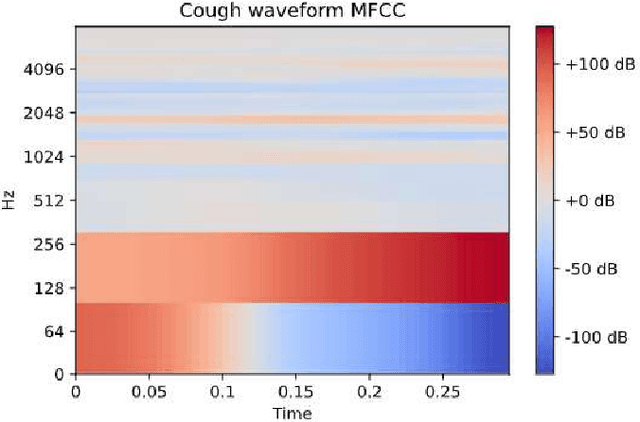Vinay Kulkarni
Statistical Inference Framework for Extended Target Detection in mmWave Automotive Radar
Sep 30, 2025Abstract:Millimeter wave (mmWave) radar systems, owing to their large bandwidth, provide fine range resolution that enables the observation of multiple scatterers originating from a single automotive target commonly referred to as an extended target. Conventional CFAR-based detection algorithms typically treat these scatterers as independent detections, thereby discarding the spatial scattering structure intrinsic to the target. To preserve this scattering spread, this paper proposes a Range-Doppler (RD) segment framework designed to encapsulate the typical scattering profile of an automobile. The statistical characterization of the segment is performed using Maximum Likelihood Estimation (MLE) and posterior density modeling facilitated through Gibbs Markov Chain Monte Carlo (MCMC) sampling. A skewness-based test statistic, derived from the estimated statistical model, is introduced for binary hypothesis classification of extended targets. Additionally, the paper presents a detection pipeline that incorporates Intersection over Union (IoU) and segment centering based on peak response, optimized to work within a single dwell. Extensive evaluations using both simulated and real-world datasets demonstrate the effectiveness of the proposed approach, underscoring its suitability for automotive radar applications through improved detection accuracy.
KAN-powered large-target detection for automotive radar
Feb 26, 2025



Abstract:This paper presents a novel radar signal detection pipeline focused on detecting large targets such as cars and SUVs. Traditional methods, such as Ordered-Statistic Constant False Alarm Rate (OS-CFAR), commonly used in automotive radar, are designed for point or isotropic target models. These may not adequately capture the Range-Doppler (RD) scattering patterns of larger targets, especially in high-resolution radar systems. Additional modules such as association and tracking are necessary to refine and consolidate the detections over multiple dwells. To address these limitations, we propose a detection technique based on the probability density function (pdf) of RD segments, leveraging the Kolmogorov-Arnold neural network (KAN) to learn the data and generate interpretable symbolic expressions for binary hypotheses. Beside the Monte-Carlo study showing better performance for the proposed KAN expression over OS-CFAR, it is shown to exhibit a probability of detection (PD) of 96% when transfer learned with field data. The false alarm rate (PFA) is comparable with OS-CFAR designed with PFA = $10^{-6}$. Additionally, the study also examines impact of the number of pdf bins representing RD segment on performance of the KAN-based detection.
Hierarchical Repository-Level Code Summarization for Business Applications Using Local LLMs
Jan 14, 2025



Abstract:In large-scale software development, understanding the functionality and intent behind complex codebases is critical for effective development and maintenance. While code summarization has been widely studied, existing methods primarily focus on smaller code units, such as functions, and struggle with larger code artifacts like files and packages. Additionally, current summarization models tend to emphasize low-level implementation details, often overlooking the domain and business context that are crucial for real-world applications. This paper proposes a two-step hierarchical approach for repository-level code summarization, tailored to business applications. First, smaller code units such as functions and variables are identified using syntax analysis and summarized with local LLMs. These summaries are then aggregated to generate higher-level file and package summaries. To ensure the summaries are grounded in business context, we design custom prompts that capture the intended purpose of code artifacts based on the domain and problem context of the business application. We evaluate our approach on a business support system (BSS) for the telecommunications domain, showing that syntax analysis-based hierarchical summarization improves coverage, while business-context grounding enhances the relevance of the generated summaries.
Cough Detection from Acoustic signals for patient monitoring system
Jul 25, 2021



Abstract:Cough is one of the most common symptoms in all respiratory diseases. In cases like Chronic Obstructive Pulmonary Disease, Asthma, acute and chronic Bronchitis and the recent pandemic Covid-19, the early identification of cough is important to provide healthcare professionals with useful clinical information such as frequency, severity, and nature of cough to enable better diagnosis. This paper presents and demonstrates best feature selection using MFCC which can help to determine cough events, eventually helping a neural network to learn and improve accuracy of cough detection. The paper proposes to achieve performance of 97.77% Sensitivity (SE), 98.75% Specificity (SP) and 98.17% F1-score with a very light binary classification network of size close to 16K parameters, enabling fitment into smart IoT devices.
 Add to Chrome
Add to Chrome Add to Firefox
Add to Firefox Add to Edge
Add to Edge